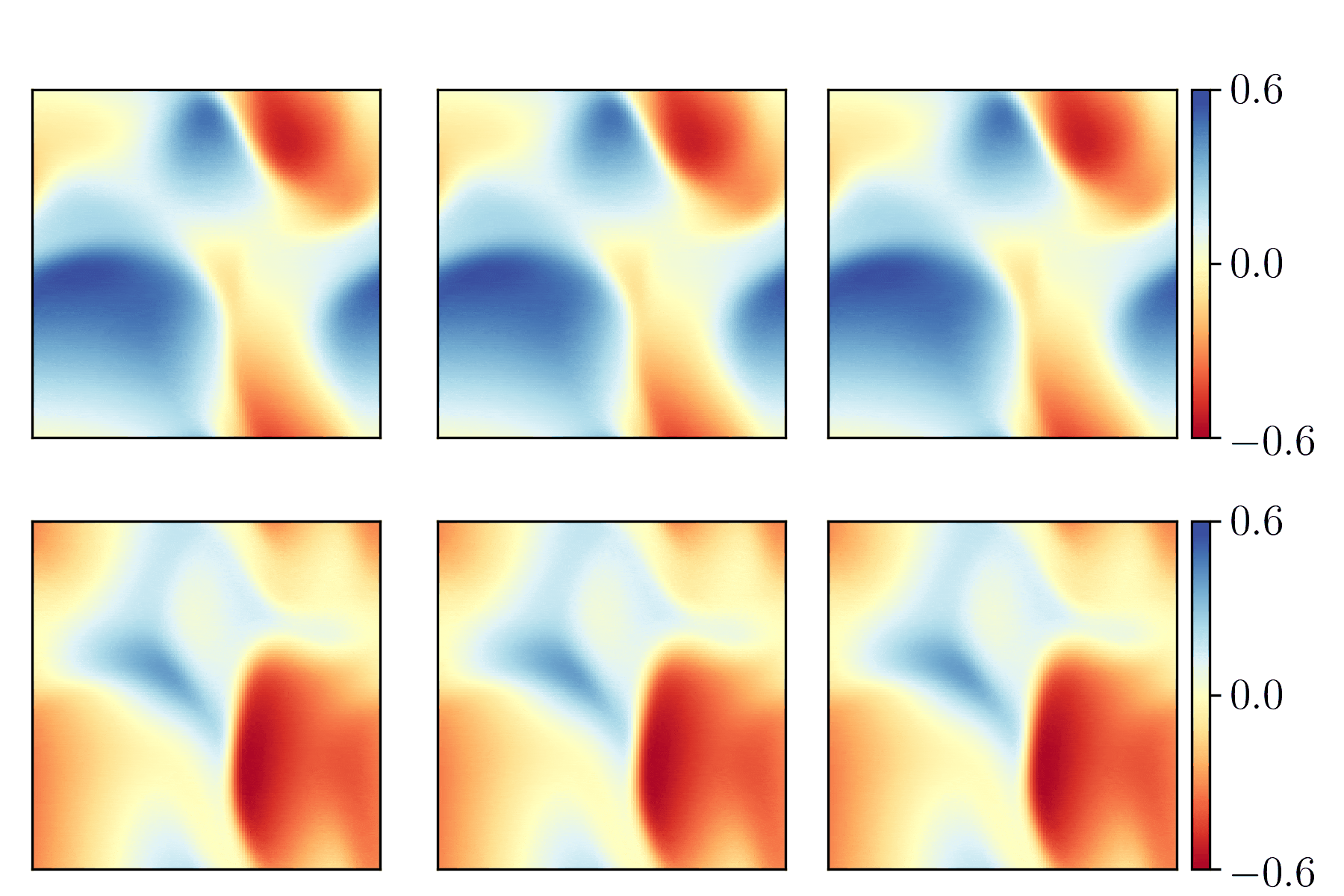Decoupling and Recoupling Spatiotemporal Representation for RGB-D-based Motion Recognition, arxiv
This is a PyTorch implementation of our paper.
1. Requirements
torch>=1.7.0; torchvision>=0.8.0; Visdom(optional)
data prepare: Database with the following folder structure:
│NTURGBD/
├──dataset_splits/
│ ├── @CS
│ │ ├── train.txt
video name total frames label
│ │ │ ├──S001C001P001R001A001_rgb 103 0
│ │ │ ├──S001C001P001R001A004_rgb 99 3
│ │ │ ├──......
│ │ ├── valid.txt
│ ├── @CV
│ │ ├── train.txt
│ │ ├── valid.txt
├──Images/
│ │ ├── S001C002P001R001A002_rgb
│ │ │ ├──000000.jpg
│ │ │ ├──000001.jpg
│ │ │ ├──......
├──nturgb+d_depth_masked/
│ │ ├── S001C002P001R001A002
│ │ │ ├──MDepth-00000000.png
│ │ │ ├──MDepth-00000001.png
│ │ │ ├──......
It is important to note that due to the RGB video resolution in the NTU dataset is relatively high, so we are not directly to resize the image from the original resolution to 320x240, but first crop the object-centered ROI area (640x480), and then resize it to 320x240 for training and testing.
2. Methodology
We propose to decouple and recouple spatiotemporal representation for RGB-D-based motion recognition. The Figure in the first line illustrates the proposed multi-modal spatiotemporal representation learning framework. The RGB-D-based motion recognition can be described as spatiotemporal information decoupling modeling, compact representation recoupling learning, and cross-modal representation interactive learning. The Figure in the second line shows the process of decoupling and recoupling saptiotemporal representation of a unimodal data.3. Train and Evaluate
All of our models are pre-trained on the 20BN Jester V1 dataset and the pretrained model can be download here. Before cross-modal representation interactive learning, we first separately perform unimodal representation learning on RGB and depth data modalities.
Unimodal Training
Take training an RGB model with 8 GPUs on the NTU-RGBD dataset as an example, some basic configuration:
common:
dataset: NTU
batch_size: 6
test_batch_size: 6
num_workers: 6
learning_rate: 0.01
learning_rate_min: 0.00001
momentum: 0.9
weight_decay: 0.0003
init_epochs: 0
epochs: 100
optim: SGD
scheduler:
name: cosin # Represent decayed learning rate with the cosine schedule
warm_up_epochs: 3
loss:
name: CE # cross entropy loss function
labelsmooth: True
MultiLoss: True # Enable multi-loss training strategy.
loss_lamdb: [ 1, 0.5, 0.5, 0.5 ] # The loss weight coefficient assigned for each sub-branch.
distill: 1. # The loss weight coefficient assigned for distillation task.
model:
Network: I3DWTrans # I3DWTrans represent unimodal training, set FusionNet for multi-modal fusion training.
sample_duration: 64 # Sampled frames in a video.
sample_size: 224 # The image is croped into 224x224.
grad_clip: 5.
SYNC_BN: 1 # Utilize SyncBatchNorm.
w: 10 # Sliding window size.
temper: 0.5 # Distillation temperature setting.
recoupling: True # Enable recoupling strategy during training.
knn_attention: 0.7 # Hyperparameter used in k-NN attention: selecting Top-70% tokens.
sharpness: True # Enable sharpness for each sub-branch's output.
temp: [ 0.04, 0.07 ] # Temperature parameter follows a cosine schedule from 0.04 to 0.07 during the training.
frp: True # Enable FRP module.
SEHeads: 1 # Number of heads used in RCM module.
N: 6 # Number of Transformer blochs configured for each sub-branch.
dataset:
type: M # M: RGB modality, K: Depth modality.
flip: 0.5 # Horizontal flip.
rotated: 0.5 # Horizontal rotation
angle: (-10, 10) # Rotation angle
Blur: False # Enable random blur operation for each video frame.
resize: (320, 240) # The input is spatially resized to 320x240 for NTU dataset.
crop_size: 224
low_frames: 16 # Number of frames sampled for small Transformer.
media_frames: 32 # Number of frames sampled for medium Transformer.
high_frames: 48 # Number of frames sampled for large Transformer.
bash run.sh tools/train.py config/NTU.yml 0,1,2,3,4,5,6,7 8
or
CUDA_VISIBLE_DEVICES=0,1,2,3,4,5,6,7 python -m torch.distributed.launch --nproc_per_node=8 --master_port=1234 train.py --config config/NTU.yml --nprocs 8
Cross-modal Representation Interactive Learning
Take training a fusion model with 8 GPUs on the NTU-RGBD dataset as an example.
bash run.sh tools/fusion.py config/NTU.yml 0,1,2,3,4,5,6,7 8
or
CUDA_VISIBLE_DEVICES=0,1,2,3,4,5,6,7 python -m torch.distributed.launch --nproc_per_node=8 --master_port=1234 fusion.py --config config/NTU.yml --nprocs 8
Evaluation
CUDA_VISIBLE_DEVICES=0,1,2,3 python -m torch.distributed.launch --nproc_per_node=4 --master_port=1234 train.py --config config/NTU.yml --nprocs 1 --eval_only --resume /path/to/model_best.pth.tar
4. Models Download
| Dataset | Modality | Accuracy | Download |
|---|---|---|---|
| NvGesture | RGB | 89.58 | Google Drive |
| NvGesture | Depth | 90.62 | Google Drive |
| NvGesture | RGB-D | 91.70 | Google Drive |
| THU-READ | RGB | 81.25 | Google Drive |
| THU-READ | Depth | 77.92 | Google Drive |
| THU-READ | RGB-D | 87.04 | Google Drive |
| NTU-RGBD(CS) | RGB | 90.3 | Google Drive |
| NTU-RGBD(CS) | Depth | 92.7 | Google Drive |
| NTU-RGBD(CS) | RGB-D | 94.2 | Google Drive |
| NTU-RGBD(CV) | RGB | 95.4 | Google Drive |
| NTU-RGBD(CV) | Depth | 96.2 | Google Drive |
| NTU-RGBD(CV) | RGB-D | 97.3 | Google Drive |
| IsoGD | RGB | 60.87 | Google Drive |
| IsoGD | Depth | 60.17 | Google Drive |
| IsoGD | RGB-D | 66.79 | Google Drive |
Citation
@inproceedings{zhou2021DRSR,
title={Decoupling and Recoupling Spatiotemporal Representation for RGB-D-based Motion Recognition},
author={Benjia Zhou and Pichao Wang and Jun Wan and Yanyan Liang and Fan Wang and Du Zhang and Zhen Lei and Hao Li and Rong Jin},
journal={arXiv preprint arXiv:2112.09129},
year={2021},
}
LICENSE
The code is released under the MIT license.
Copyright
Copyright (C) 2010-2021 Alibaba Group Holding Limited.








